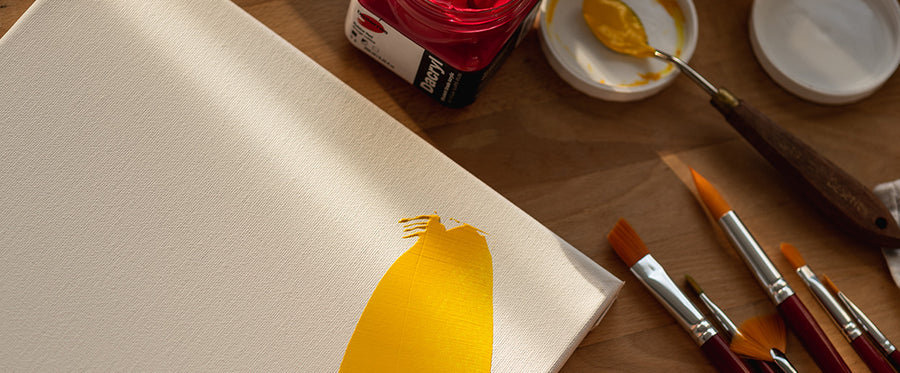Here is a tutorial that shows how to mix the primary colours and how to choose the right ones as a basis for all colours.
- Lemon yellow (or light cadmium yellow)
- Medium cadmium yellow
- Light cadmium red (or medium cadmium red)
- Alizarin crimson (or quinacridone)
- Phthalocyanine blue (or cerulean blue)
- Ultramarine blue
- Ivory black (or Mars black)
- Titanium white
Mixtures for obtaining secondary colours:
Lemon yellow + Phthalocyanine blue = Pure secondary green
Medium cadmium Yellow + Light cadmium red = Pure secondary orange
Alizarin crimson + Ultramarine blue = Pure secondary violet
The primary colours—the three colours that are mixed to create all other colours—on the colour wheel are magenta, cyan and yellow. Although these colours exist in theory, in the art world they are mixtures of pigments specific to each manufacturer. Since paint colours composed of mixtures of pigments are considered less reliable, try choosing paints containing only one pigment.
In order to recreate all the colours with the least possible number of tubes of colour, try choosing two paint tubes of each primary colour: one warm hue and one cool hue.
Since each of these pigments have different properties, the quantity of paint must be measured out in order to obtain the desired hue. Yellow pigments are generally not very opaque, while alizarin crimson, quinacridone and phthalocyanine have a higher tinting strength. That is why more yellow pigments are needed to tint the mixtures.
The six basic colours illustrated above can be mixed according to the specified combinations to obtain so-called “pure” secondary colours: green, orange and purple. Although other combinations are also possible, the resulting colours will be duller, approaching brownish-grey hues (see example). Adding white or black makes it possible to recreate the infinite colour nuances that we perceive. Having a sound knowledge of the colour wheel and the properties of pigments makes it easier to mix colours. Additional references such as the DeSerres Colour Wheel, the Magic Palette Color Mixing Guide and the Nuancier du peintre series are also very handy.










